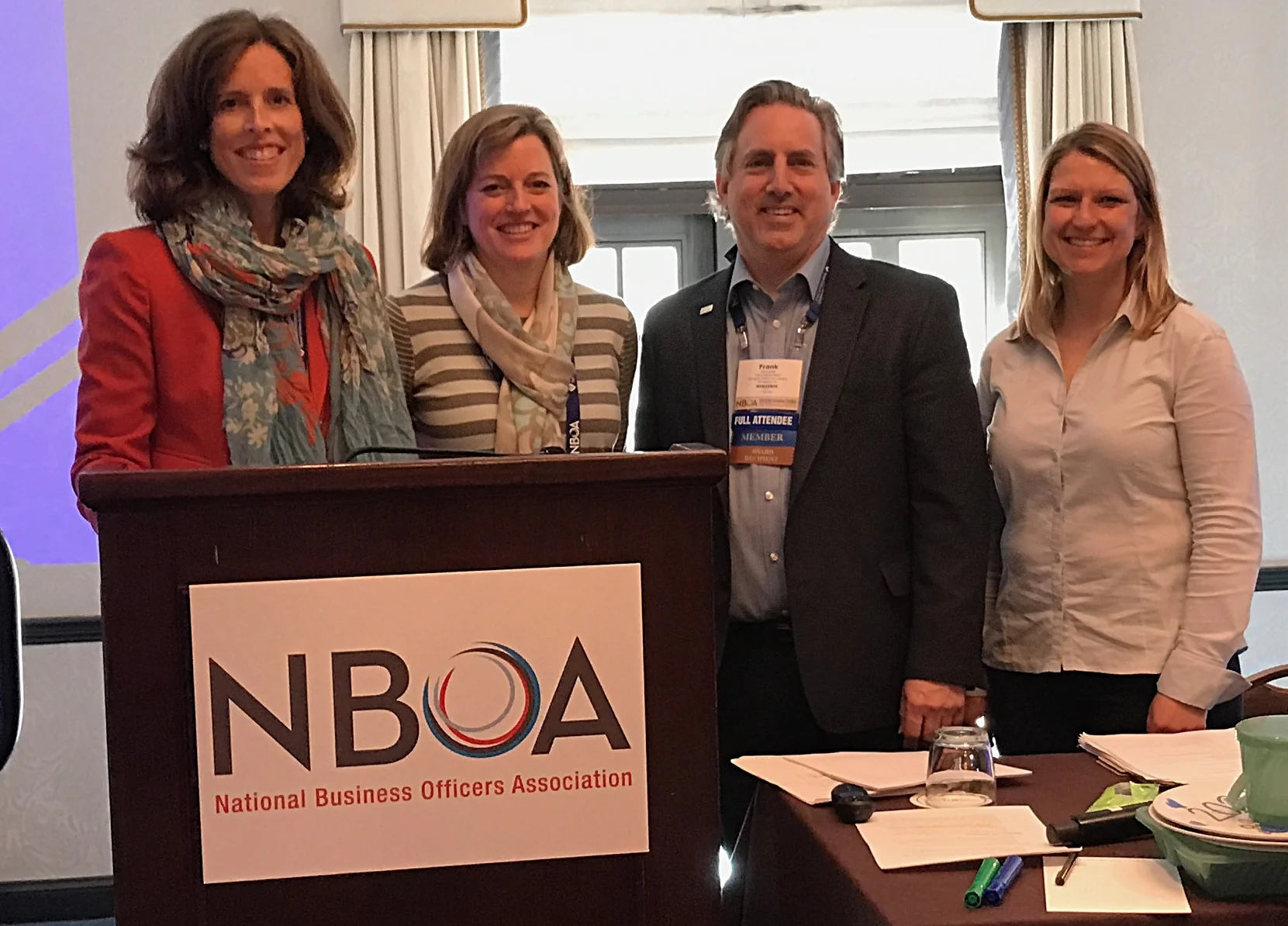Interested in Westtown School’s new student-run composting system? Learn more about how Westtown teaches students about food waste through hands-on participation in the composting process.
4 Tips to Shrink Your Lawn with Native Plants
Across the United States, manicured grass lawns blanket over 40 million acres posing serious threats to surrounding biodiversity and ecosystems (Audubon, n.d.). Grass lawns at schools and homes crowd out wildlife and native plants. They also require a lot of water, fossil fuels, and chemicals to maintain them.
American lawns consume:
Nearly 3 trillion gallons of water a year,
200 million gallons of gas (from mowing) and the noise from the mowers and string trimmers can be
70 million pounds of pesticides (NRDC, 2016).
Many lawns consist of just one species or “monocultures” (such as Bermuda grass from Africa) that is exclusively cultivated. A monoculture landscape lacks biodiversity to support beneficial pollinators like birds and butterflies.
Unsure how to reduce your impact whether at home or school? We’ve pulled together some eco-friendly tips on how and why native plants are good for us.
Tip 1: Start Small
Look for areas at your school or at home where the grass doesn’t grow in the first place – this can be steep banks, rocky outcroppings, shaded areas under the trees. Consider unused areas, such as front and side yards or buildings, where grass could be replaced with alternative plantings.
Once you’ve identified an area, spread a sheet of black plastic and place rocks over it. The weight will cause the grass to wither and the roots to dry up. After this, turn the top 12” of soil and use a hoe to break up the clumps. The area is now prepped and ready for native plants!
Tip 2: Choose Native over Exotic Plants
Go for a “natural” rather than formal look by choosing native plants that are conducive to your location (see “plant hardiness growing zone”). Native plants provide a host of benefits: they require low maintenance, help combat climate change, conserve water, and provide vital habitats for wildlife. Native plants create mutually beneficial relationships between the insects and bird populations. Exotic (non-native) plants disrupt these relationships, often harbor invasive pests, and require more maintenance.
Photo of blue-eyed grass (Sisyrinchium idahoense), a native groundcover
Invite Pollinators & Plant Native Species
Did you know that 35% of the world's food crops depend on animal pollinators to reproduce (USDA)? Pollinators perform crucial mechanisms to support ecosystems making it possible for our food and flowers to grow. Pesticides, drought, habitat destruction, and climate change threaten pollinators like insects and birds (Vassar, 2017). Consider supporting these important pollinators by planting native species such as perennials like coneflowers, cardinal flowers, milkweed, white wood aster, blue wild indigo, and Virginia bluebells. A landscape of native plants provides teachable moments where students can observe the interaction between plants and pollinators and learn the benefits of biodiversity.
Native flowers at Mt. Cuba botanical garden
When planting, it is important to consider the garden’s location, soil type, and potential native plants. While most flowers can grow in both sunny and shady locations, butterflies and other pollinators prefer wildflowers that grow best in full or partial sun. Also, depending on the location, the soil can be sandy and well-drained or more clay-like and wet, which will greatly affect the types of plants you can grow (FWS, 2003).
Tip 3: Ditch the Pesticides
Pesticides are chemicals designed to kill insects, plants, and fungi to create the ‘perfect’ lawn. However, they inadvertently pose a series of negative consequences. For instance, pesticide residue affects the quality and structure of the soil and leaches into the groundwater. Not to mention, it can be severely toxic for soil-living organisms. Lawn chemicals should also be avoided especially if there are children who play on it. The pesticide residue moves up through the food chain posing serious health consequences to a series of species including humans (Policy, USA).
Tip 4: Educate Others
Certify your school or yard with a sign that tells others about your habitat. Programs such as the National Wildlife Federation’s Wildlife Habitat, Audubon Mid-Atlantic, and the North American Butterfly Association offers a Butterfly Garden and Habitat Program. These programs provide excellent resources for how to certify your home or school garden. They also provide signage to educate others about the importance of biodiversity and native species.
National Wildlife Federation’s Certified Wildlife Habitat signs educate others about the importance of creating native habitat
A Call to Action
Our actions to improve native habitats can help to reduce the negative impacts of biodiversity decline. President Biden established a national goal to conserve at least 30% of US lands and freshwater and 30% of US ocean areas by 2030. This initiative is referred to as “30×30.” Our collective actions may seem small but together we can make positive change.
Additional Articles:
Article by Hannah Riegel, Boston College ‘22, Sustainability Intern at Boyer Sudduth Environmental Consultants.
Article printed in PAISBOA’s Friday Flyer Vol. XI, No. 6 - April 1, 2022
Sustainability Survey Results for PAISBOA Schools Are In!
Call for Participants in PAISBOA Sustainability Benchmarking Survey
Are you wondering how your school compares to others in issues regarding environmental sustainability or how you can make the next steps? Consider joining Boyer Sudduth and PAISBOA’s second annual School Sustainability Benchmarking Survey, a way to reflect and compare your school to peer institutions, while also having a chance to make progress in your school’s sustainability practices.
Sustainability in the Classroom: PAISBOA Sustainability Group January 26, 2022 Meeting
Inspire Students with Hydroponic Kits
No-Idling Promotes Good Stewardship & Environmental Practices
That’s a Wrap: Eco-Friendly Tips for the Holidays
More Plants, Less Waste: How Our Diet Affects Climate Change
Did you know that Americans waste a staggering 40% of our food (NDRC, 2017 )? Food waste in landfills contributes to the release of methane, a powerful heat-trapping gas 21 times more harmful than carbon dioxide. Mary Ann Boyer and Nate Buchanan of Boyer Sudduth Environmental Consultants presented “A Diet for the Climate” at Drexel University’s Academy of Natural Sciences to outline ways to reduce food waste and the carbon footprint of our diets. This presentation was part of a climate panel event, which attracted 119 participants on November 16, 2021.
In their presentation, Boyer and Buchanan highlighted the climate impacts of methane emissions from food in landfills and provided tips to limit our food waste.
Figure 1: Tips to limit food waste and reduce your food footprint.
They then addressed the carbon emissions from a meat-heavy diet. The chart below shows the carbon emissions of various foods. Beef is the highest, followed by cheese, pork, poultry and fish.
Figure 2: Greenhouse Gas Emissions by Food Type per pound of edible weight.
“Shifting our food choices to eat ‘lower on the food chain,’ opting for less carbon intensive poultry or fish, can help reduce our emissions,” noted Boyer. “Eating a plant-forward diet is better for our health and the planet.”
Boyer and Buchanan then outlined tips to eat a plant-forward diet. “We’re not asking everyone to become vegetarians or vegans overnight, but that they consider eating more plants and less meat,” added Buchanan.
Figure 3: Tips for Eating a Plant-Forward Diet.
If you want to embrace a plant-forward diet, start small. Going one day a week without meat (like a “Meatless Monday”) or trying out a plant-based burger are some excellent first-steps to start eating plant-forward. It is critical to remember that every small dietary change can have a positive climate impact.
For more information, see these tips to reduce our food footprint. After Boyer and Buchanan’s presentation, Bob Ellis of the Climate Reality Project, presented on the state of the climate crisis. To view the full panel and presentations, click here.
Blog by Nate Buchanan, Haverford College ‘22, Sustainability Intern at Boyer Sudduth Environmental Consultants.
Learning Outside the Classroom: PAISBOA Sustainability Group Meets at Germantown Academy
OASIS’s Fall Meeting: “Creating a Culture of Hope”
On October 21, 2021, 41 participants joined virtually for OASIS’s Sustainability Group first fall meeting featuring guest speaker, Brian Dunbar, Executive Director of the Institute for the Built Environment and Professor Emeritus at Colorado State University. Dunbar’s theme “Creating a Culture of Hope” embodied two big ideas: Whole School Sustainability and Regenerative Future.
How to “Green” the Yellow School Bus
Your Blue Jeans Are Not Green
The fashion industry poses serious threats to the environment. In our blog article, we explore the consequences of the industry discussed in “Unraveled: The Life and Death of a Garment” by Maxine Bedat as she follows the life of an American icon, a pair of jeans and discuss new ways to make a difference
“Green” Your Coffee Station
2021 Grants to Green Your School
GDS Students Propose Reducing School Emissions with the Climate Footprint Challenge©
Georgetown Day School (GDS) Environmental Science students in CA Pilling’s class gained real-world experience this spring by studying their school’s carbon emissions. Students collected and analyzed data pertaining to three areas of the school: facilities (energy use), transportation, and waste.
Sustainability Survey for PAISBOA Schools Launched This Spring
Wondering how your school compares with others around environmental sustainability?
Boyer Sudduth Environmental Consultants created a short Sustainability Benchmarking Survey specifically for PAISBOA member schools and launched it this May. Mary Ann Boyer shared the survey results at the May 19th PAISBOA Sustainability Virtual Meeting.
Micro Forests: Macro Changes Toward Reducing Climate Change
How Tree Equity Can Fight Racial Inequality
Trees play an integral role in promoting community health. Sadly, in the United States, trees are not equitably distributed among neighborhoods leaving certain groups of people lacking the environmental benefits that trees make available. Tree Equity is the solution to ensuring that everyone, regardless of income or race, has access to the benefits that trees supply to our lives.


























